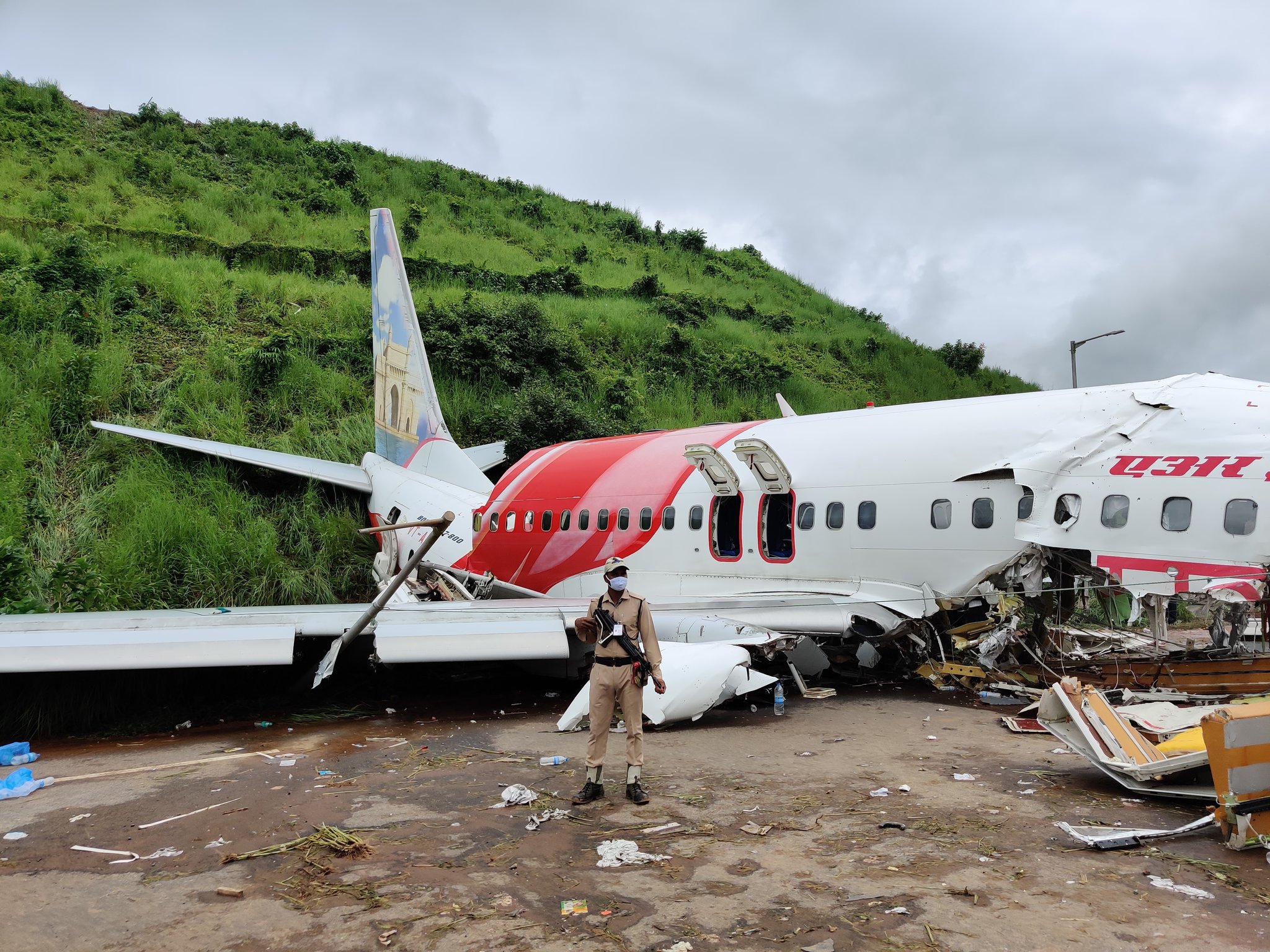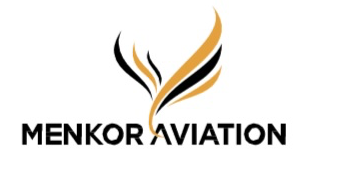
Air India Express Crash – Safety Analysis
As safety is the most important for its clients, Menkor Aviation will provide information on safety. Today we will talk about the accident that happened the 07th of August 2020 with a Boeing 737-800 at Calicut in India.
07 Aug 2020 – 737-800, VT-AXH (36323/2108, age 13.7 years), operated by Air India Express overrun runway 10 after landing at 19:41L (14:11Z) and fell down a ravine at Kozhikode, India (VOCL) on 7 Aug 2020. First reports are that both pilots and 14 passengers have died.
The Indian DGCA stated: “Air India Express AXB1344, B737 Dubai to Calicut, person on board 191, visibility 2000 meter, heavy rain, after landing Runway 10, continued running to end of runway and fall down in the valley and broke down in two pieces.”
ADS-B data shows that the aircraft made an approach to runway 28 about 20 minutes before the incident landing but went around.
Runway 10/28 is 2845 meters (9330 feet) long with ILS approaches for both ends.
The METAR suggests that there was a tailwind for Runway 10:
– VOCL 071400Z 26012KT 2000 -RA SCT003 SCT012 FEW025CB OVC080 24/23 Q1008 TEMPO 1500 -RA BR=
– VOCL 071430Z 24011KT 2000 -RA SCT003 SCT012 FEW025CB OVC080 24/23 Q1009 TEMPO 1500 -RA BR
We do not know at the moment what has been the reason of the overrun. Despite the fact the reason of the accident are not known, Menkor Aviation would like to inform from a general manner what the FAA has published as a SAFO (Safety Alert for Operator)
Subject: Turbojet Braking Performance on Wet Runways.
Purpose: This SAFO (Safety Alerts for Operators) cancels and replaces SAFO 15009 and warns airplane operators and pilots that the advisory data for wet runway landings may not provide a safe stopping margin especially in conditions of Moderate or Heavy Rain.
Background: Landing overruns that occur on wet runways typically involve multiple contributing factors such as long touchdown, improper use of deceleration devices, tailwind and less available friction than expected. Several recent runway-landing incidents/accidents have raised concerns with wet runway stopping performance assumptions. Analysis of the stopping data from these incidents/accidents indicates the braking coefficient of friction in each case was significantly lower than expected for a wet runway as defined by Title 14 of the Code of Federal Regulations (14 CFR) part 25 § Section 25.109 and Advisory Circular (AC) 25-7D methods.
These incidents/accidents occurred on both grooved and un-grooved runways. The data indicates that applying a 15% safety margin to wet runway time-of-arrival advisory data, as recommended by SAFO 19001 (or current guidance), may be inadequate in certain wet runway conditions. Takeoff and Landing Performance Assessment (TALPA) procedures implemented by the FAA on October 1, 2016, added new insight as to how flightcrews can evaluate runway braking performance prior to landing. TALPA defines WET as “Includes damp and 1/8-inch depth or less of water,” while CONTAMINATED is “greater than 1/8-inch of water.”

Discussion: These overruns have occurred on grooved and smooth runways during periods of moderate to heavy rain. Analysis of these incidents/accidents indicates that the braking coefficient of friction in each case was significantly lower than expected, and that 30 to 40 percent of additional stopping distance may be required if the runway transitions from wet to contaminated based on the rainfall intensity or reported water contamination (greater than 1/8-inch depth). For the operational in-flight landing assessment, determining whether the runway is wet or potentially contaminated is the pilot’s responsibility.
The FAA recommends that airports report “Wet” conditions. However, airports are not required to report when a runway is only wet. Further, an airport may not be able to generate a Field Condition NOTAM (FICON) for sudden rain showers that result in water on the runway more than 1/8 of an inch in depth (contaminated). Rainfall intensity may be the only indication available to the pilot that the water depth present on the runway may be excessive. The 1/8-inch threshold that separates a wet runway with a RWYCC of 5 from runway contaminated with water depth greater than 1/8-inch a RWYCC of 2 is based on possibility of dynamic hydroplaning. This can be especially true in moderate rain if the runway is not properly crowned, grooved, constructed with a porous friction course (PFC) overlay, or when water runoff becomes overwhelmed. During heavy rain events, this may be true even on a properly maintained grooved or PFC runway.
The TALPA RCAM recommends using landing performance data associated with medium to poor braking or RwyCC of 2, if greater than 1/8-inch of water is anticipated to be on the runway. When planning to land on a smooth runway under conditions of moderate or heavy rain, or when landing on a grooved or PFC runway under heavy rain, pilots should consider that the surface may be contaminated with water at depth greater than 1/8 inch and adjust their landing distance assessment accordingly. Pilots should use all available resources to determine what condition they may expect upon landing to include Air Traffic Control (ATC), FICONs (as some airports do report Wet conditions), flight visibility, and/or onboard weather radar.
Note: A Special Weather Observation (SPECI) will only be generated if a Thunderstorm begins. A SPECI is not generated when rainfall rates simply change.
Knowing ahead of time whether your aircraft can or cannot stop within the Landing Distance Available if runway conditions deteriorate to a medium to poor condition (RwyCC = 2) is critical when operating in moderate or heavy rain. Go-around, holding, or diversion may be necessary if rainfall intensity increases beyond what might be acceptable for the intended operation.
Some of the wet runway braking shortfalls have occurred at US airports where 14 CFR Part 139 runway design and maintenance standards apply. Operators should be aware that the aforementioned runway design and maintenance standards might not be met in other countries. Many countries’ standards for design, construction and/or maintenance of runways are based on International Civil Aviation Organization (ICAO) Annex 14 runway design and maintenance standards, however they may lack oversight in implementation of these standards. Outside of the United States, there is often less usage of grooving or PFC overlay which, when present, will normally aid in drainage and mitigate the risk of hydroplaning during active precipitation, thus improving braking action. Unless the pilot or operator is knowledgeable of the runway’s maintenance program, and that the runway is grooved or is a PFC surface that can provide good runway friction during periods of active moderate or heavy rain, they should consider basing their time-of-arrival assessment on the above recommendations. Aircraft operators should also clarify their reporting needs to the airport operator as it relates to “Wet” runway conditions.
As stated initially, the other common contributing factors for wet runway excursions include, but are not limited to delayed touchdown, improper application of deceleration devices and tailwind landings. Aircraft operators should review their flight training programs to ensure flight crews are familiar with the assumptions used in creating the data used for the time-of-arrival assessment, such as the assumed distance from threshold to touchdown and recommended uses of deceleration devices. 14 CFR Part 121 aircraft operators should also ensure flight crews are aware of the wind assumed in the original dispatch calculations for the flight. Advisory Circular 91-79A addresses these issues, and operators should review the guidance contained therein.
Recommended Action: Directors of Safety and Directors of Operations (Part 121); Directors of Operations (parts 135, and 125), Program Managers, (Part 91K), and Pilots (Part 91) should ensure pilots verify, prior to initiating an approach, that the aircraft can stop within the Landing Distance Available using a RwyCC of “2” whenever there is the likelihood of moderate or greater rain on a smooth runway or heavy rain on a grooved/PFC runway. Contact: Questions or comments regarding this SAFO should be directed to the Air Transportation Division’s Air Carrier Operations Branch at (202) 267-8166.
